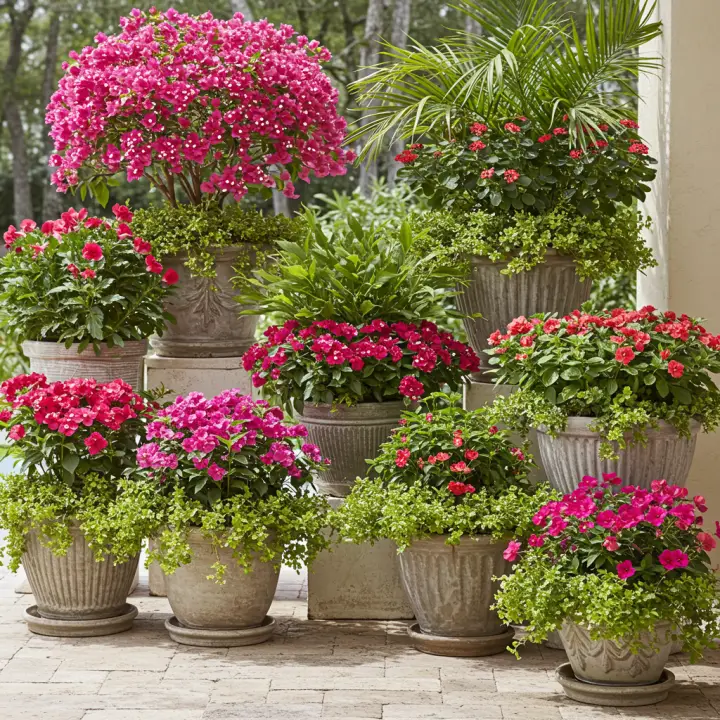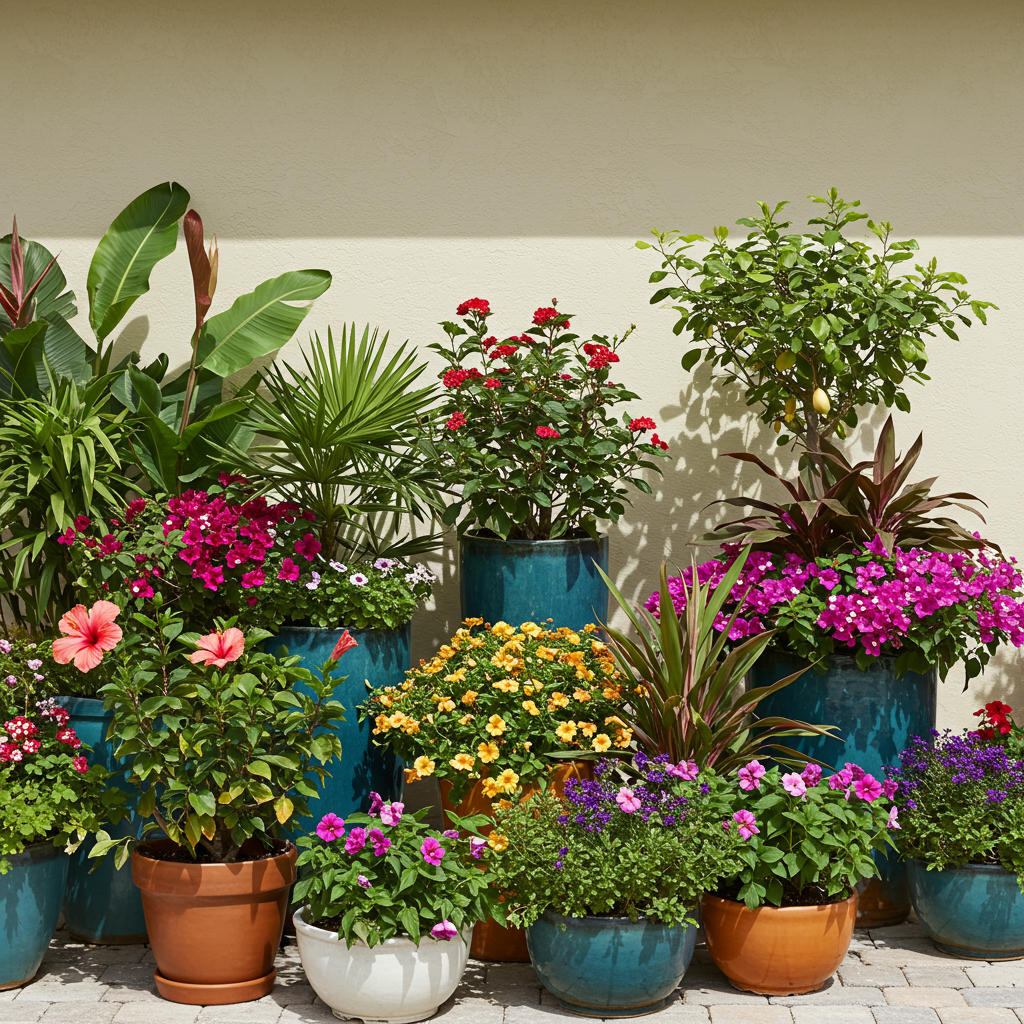Creating a vibrant, lush garden in Southwest Florida is a dream for many residents. However, the unique climate—intense sun, high humidity, sandy soil, and seasonal deluges—can present challenges. The perfect solution is mastering the art of container gardening. This guide provides everything you need to know about choosing, planting, and caring for the best container plants SW Florida has to offer, turning your lanai, patio, or balcony into a stunning and effortless tropical escape.
A Splash of Green for Your Sunshine State Home

Welcome to Southwest Florida, where the sun shines bright and the living is easy. If you’ve ever wanted to surround yourself with beautiful plants but felt intimidated by the local gardening challenges, you’re in the right place. Container gardening is the key to unlocking a world of botanical beauty without the back-breaking work of amending sandy soil or battling invasive pests in a large garden bed. It gives you complete control over your plant’s environment—from soil to water to location—making it ideal for lanais, balconies, pool cages, and patios. This guide will walk you through the hardiest, most beautiful, and most rewarding plants that thrive in pots under the SWFL sun.
Why Container Gardening is a Game-Changer in SW Florida
Before we dive into the specific plants, it’s essential to understand why containers are the superior choice for many gardeners in this region. The benefits go far beyond simply being pretty.
Total Soil Control: Southwest Florida’s native soil is often sandy, nutrient-poor, and home to root-knot nematodes that can destroy sensitive plants. With containers, you can create the perfect, nutrient-rich potting mix tailored to each plant’s specific needs.
Mobility and Flexibility: A sudden cold snap (yes, it happens!) or an approaching hurricane? You can easily move your prized plants to a sheltered location. Want to redecorate your patio? Just rearrange the pots. This flexibility is invaluable.
Water Management Perfected: The “rainy season” can drown plants in the ground, while the “dry season” can parch them. In a pot with excellent drainage, you can prevent root rot during downpours and ensure your plants get a consistent drink during dry spells.
Pest and Disease Prevention: Isolating plants in containers makes it much easier to spot and treat pests like mealybugs or aphids before they spread to an entire garden.
Perfect for Any Space: Whether you have a sprawling lanai or a tiny apartment balcony, there’s always room for a container garden. You can go vertical, use hanging baskets, or create clustered arrangements to maximize your space.
Accessibility: Raised containers and pots on stands make gardening accessible to everyone, reducing the need for bending and kneeling.
Getting Started: The Foundation of Success
A successful container garden begins long before you buy a plant. Setting up your containers correctly will save you headaches and ensure your green friends flourish.
H3: Choosing the Right Container
The pot you choose is more than just a decorative holder; it’s your plant’s home.
Terracotta/Clay: These classic pots are porous, which allows air and water to move through the sides. This is great for preventing root rot and is ideal for plants that prefer to dry out between waterings, like succulents and bougainvillea. The downside? They dry out very quickly in the intense Florida sun, requiring more frequent watering.
Glazed Ceramic: Beautiful and available in countless colors, glazed pots are less porous than terracotta, meaning they retain moisture better. They are an excellent all-around choice but can be heavy and more expensive.
Plastic/Resin: Lightweight, affordable, and excellent at retaining moisture, plastic pots are a practical choice. Opt for lighter colors, as dark plastic can absorb heat and cook the plant’s roots in the afternoon sun. Many modern resin pots beautifully mimic the look of stone or ceramic without the weight.
Self-Watering Planters: These are a fantastic option for thirsty plants or for those who travel. A built-in reservoir at the bottom wicks water up to the roots as needed, reducing the frequency of watering.
Pro Tip: No matter the material, drainage is non-negotiable. If your chosen pot doesn’t have a drainage hole, you must drill one. Without it, your plant’s roots will sit in water and rot.
H3: The Perfect Potting Mix for a Tropical Climate
Never, ever use soil from your yard in a container. It will compact into a concrete-like brick, suffocating roots and providing poor drainage. Instead, invest in a high-quality potting mix. For SW Florida, look for a mix that contains:
Peat Moss or Coco Coir: These materials form the base and are excellent at retaining moisture.
Perlite or Vermiculite: These lightweight volcanic materials create air pockets in the soil, improving aeration and drainage.
Compost or Worm Castings: These add vital organic matter and slow-release nutrients to feed your plants.
You can buy pre-made bags of high-quality potting mix from any garden center. To give it a boost, consider mixing in a handful of slow-release fertilizer granules to provide a steady food source for several months.
H3: Watering Wisdom in the Sunshine State
Watering is the most critical task in container gardening, especially here.
Check the Soil: Don’t water on a schedule. Instead, stick your finger two inches into the soil. If it feels dry, it’s time to water. If it’s moist, wait another day.
Water Deeply: When you do water, do it thoroughly. Pour water over the entire soil surface until it runs freely from the drainage hole at the bottom. This ensures the entire root ball is saturated.
Water in the Morning: Watering early in the day allows the plant to hydrate before the peak heat and minimizes water loss through evaporation. It also allows the foliage to dry before nightfall, reducing the risk of fungal diseases.
Consider Drip Irrigation: For larger collections of pots, a simple drip irrigation system with a timer can be a lifesaver, delivering water directly to the roots with minimal effort.
The Best Container Plants for Stunning SW Florida Gardens
Now for the fun part! Here are some of the most stunning, resilient, and effortless plants that thrive in Southwest Florida containers, broken down by category.
H2: Sun-Loving Superstars (For Full Sun Exposure)
These plants laugh in the face of the Florida sun, producing spectacular blooms and color when the heat is on.
H3: Bougainvillea
The quintessential symbol of tropical paradise. In a pot, you can control its size and shape.
Why it’s great: Incredibly drought-tolerant once established and produces wave after wave of vibrant, paper-like bracts in shades of pink, purple, red, orange, and white.
Sun Needs: Full, direct sun. The more sun, the more blooms.
Pro Tip: Bougainvillea blooms on new growth and prefers to be slightly root-bound. Don’t be too quick to repot it, and prune it back after a major bloom cycle to encourage more flowers.
H3: Hibiscus (Tropical)
No Florida garden is complete without the iconic, dinner-plate-sized flowers of the tropical hibiscus.
Why it’s great: Provides a classic tropical feel with flowers that come in a rainbow of colors. They love the heat and humidity.
Sun Needs: At least 6 hours of direct sun for best blooming.
Pro Tip: Hibiscus are heavy feeders. Use a balanced, slow-release fertilizer and supplement with a liquid fertilizer high in potassium during the growing season to promote big, beautiful blooms.
H3: Mandevilla & Dipladenia
These related vining plants are perfect for adding vertical interest to your lanai.
Why it’s great: They offer lush, glossy green leaves and a profusion of trumpet-shaped flowers in shades of pink, red, and white. They readily climb a trellis or can be allowed to spill over the side of a pot.
Sun Needs: Full sun to light afternoon shade.
Pro Tip: Dipladenia tends to have a more compact, shrub-like habit, making it ideal for pots without a large trellis. Mandevilla is the more aggressive viner.

